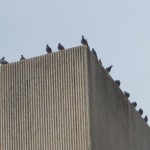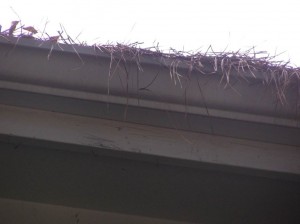Before we can discuss the treatment of rainwater, we need to know what we are treating for. Rainwater is evaporated water that condenses as part of the water cycle. Because of this, rainwater itself is generally considered clean. It is when that rainwater comes into contact with the catchment area (roof) do we have the potential for contamination. Water is the universal solvent so will pick up many contaminants. We are concerned about contaminants that may cause harm to human health or cause damage to components of the RWH system. These contaminants will vary dramatically depending on your location. Here they are divided into sections of Microbiological, Chemical, and Debris. All of the following contaminants can be treated so that they are not a threat to water quality.
Microbiological
 Microbiological contaminants are the living organisms that we cannot see with the naked eye. They include bacteria, viruses, and parasites. The source of these contaminants include the urine and feces of birds, rodents, and other small animals. Rainwater used for indoor use should include treatment that targets microbiological contaminants. Information on how to treat microbiological contaminants can be found in the After-Storage Treatment section.
Microbiological contaminants are the living organisms that we cannot see with the naked eye. They include bacteria, viruses, and parasites. The source of these contaminants include the urine and feces of birds, rodents, and other small animals. Rainwater used for indoor use should include treatment that targets microbiological contaminants. Information on how to treat microbiological contaminants can be found in the After-Storage Treatment section.
Chemical
Chemical contaminants can include metals, volatile organic chemicals (VOCs), and synthetic organic chemicals (SOCs). Metals are a concern when you have flashing on your roof that contains lead. Also, you should avoid flashing or gutters that contain copper. This metal can corrode when it comes into contact with slightly acidic rainwater. VOCs are found in refined organic products such as paints and solvents. To avoid VOCs, use only products approved for potable water use. SOCs are found in pesticides so are only a concern if they are on the catchment area. Both VOCs and SOCs can be removed with an activated carbon filter (After-Storage Treatment).
Debris
 Debris includes leaves, sticks, branches, tennis balls, or anything else that finds its way onto the roof surface. Debris can clog and damage RWH components and can add organic matter to the storage. This is the contamination that we can easily see. And it can easily be prevented and reduced as explained in the Pre-Storage Treatment section.
Debris includes leaves, sticks, branches, tennis balls, or anything else that finds its way onto the roof surface. Debris can clog and damage RWH components and can add organic matter to the storage. This is the contamination that we can easily see. And it can easily be prevented and reduced as explained in the Pre-Storage Treatment section.